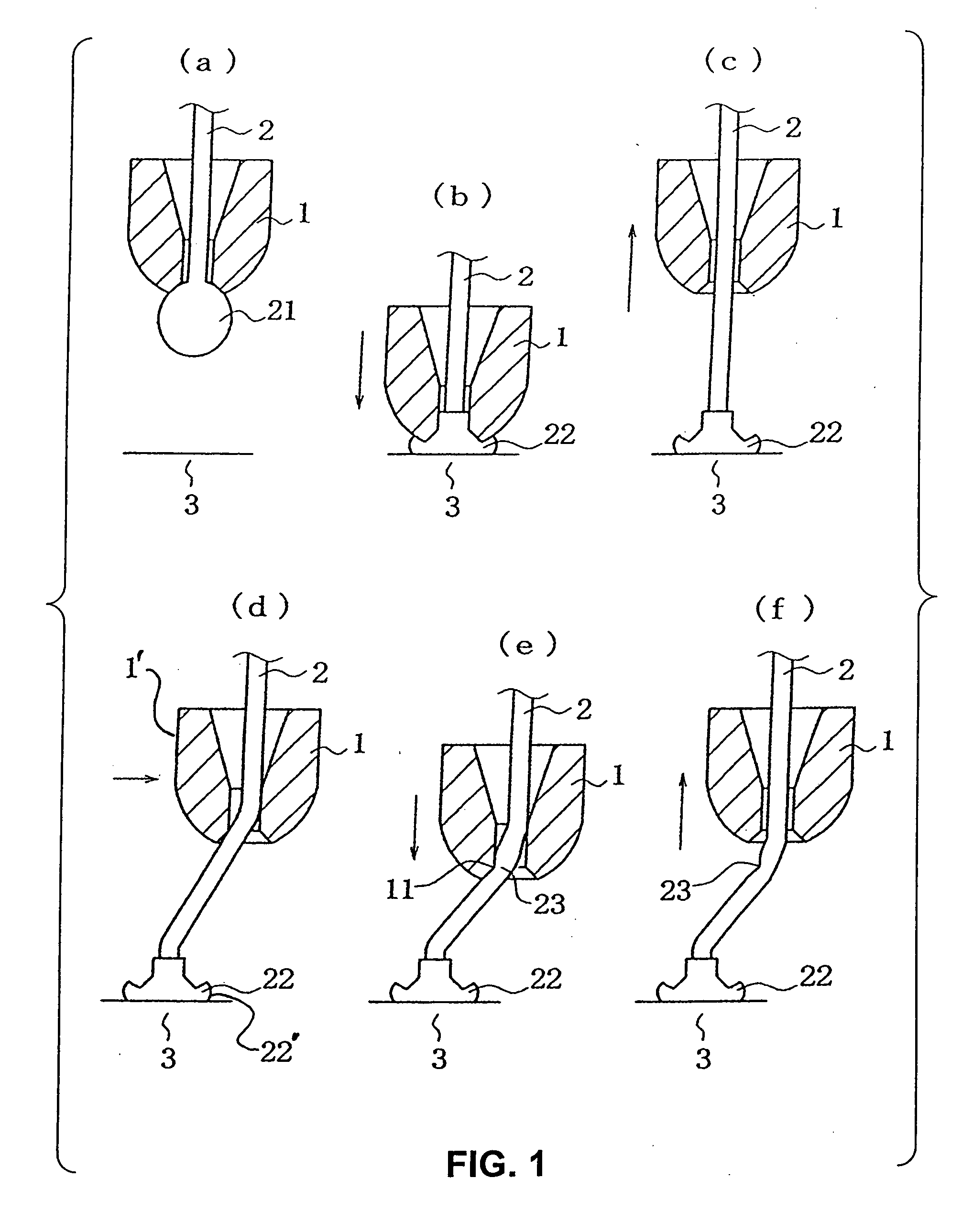Method for forming a stud bump
- Summary
- Abstract
- Description
- Claims
- Application Information
AI Technical Summary
Benefits of technology
Problems solved by technology
Method used
Image
Examples
Embodiment Construction
[0030]One embodiment of the method for forming a stud bump of the present invention will be described below with reference to FIG. 1 and FIG. 2, which is continued from FIG. 1.
[0031]In step (a) shown in FIG. 1, at the tip end of a wire 2 passing through a damper (not shown) and a capillary 1, a ball 21 is formed by an electric flame off probe (not shown), and then the clamper is opened.
[0032]Next, in step (b) of FIG. 1, the capillary 1 is caused to descend toward the pad 3, and the ball 21 is bonded to a pad 3 to form a bonded ball 22 on the pad 3.
[0033]In next step (c), the capillary 1 is caused to ascend for an arbitrary distance above the pad 3 to an arbitrary height.
[0034]Following that, in step (d), the capillary 1 is moved in a lateral direction or substantially parallel to the surface of the pad 3. More specifically, the capillary 1 is moved laterally (to the right-hand side in the shown embodiment of FIG. 1) for a distance that the outer surface (left-hand side surface 1′) o...
PUM
 Login to View More
Login to View More Abstract
Description
Claims
Application Information
 Login to View More
Login to View More - R&D
- Intellectual Property
- Life Sciences
- Materials
- Tech Scout
- Unparalleled Data Quality
- Higher Quality Content
- 60% Fewer Hallucinations
Browse by: Latest US Patents, China's latest patents, Technical Efficacy Thesaurus, Application Domain, Technology Topic, Popular Technical Reports.
© 2025 PatSnap. All rights reserved.Legal|Privacy policy|Modern Slavery Act Transparency Statement|Sitemap|About US| Contact US: help@patsnap.com


